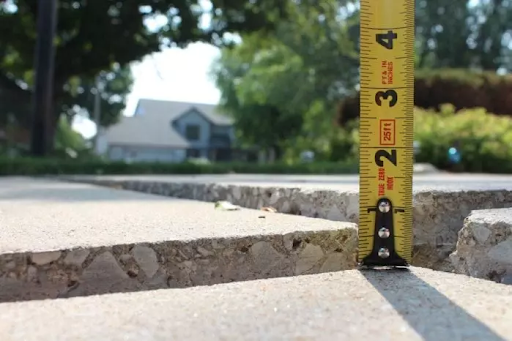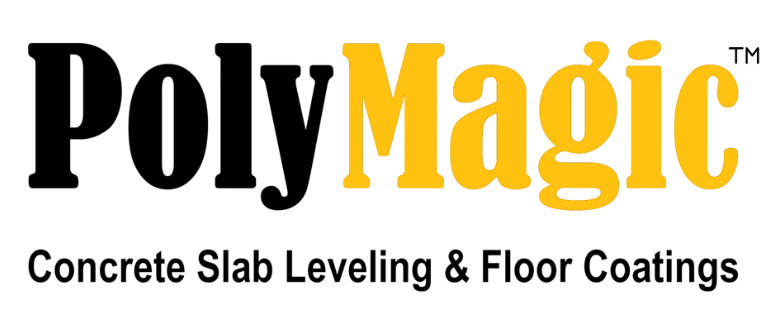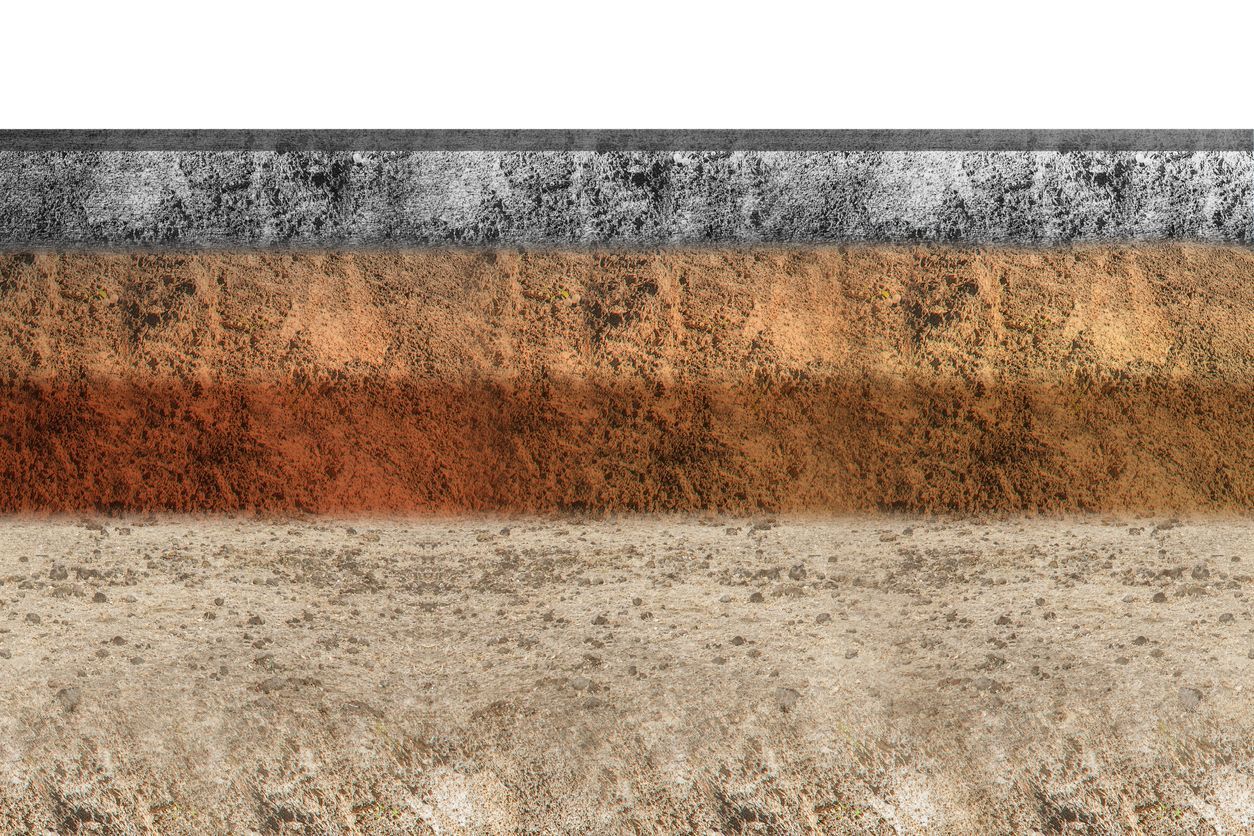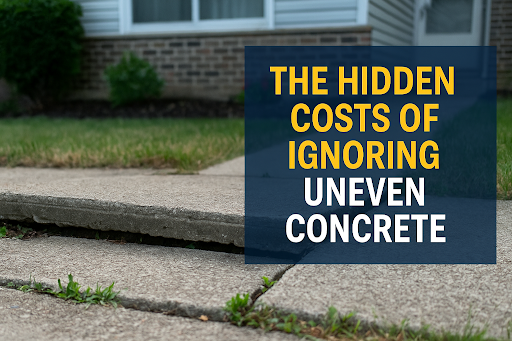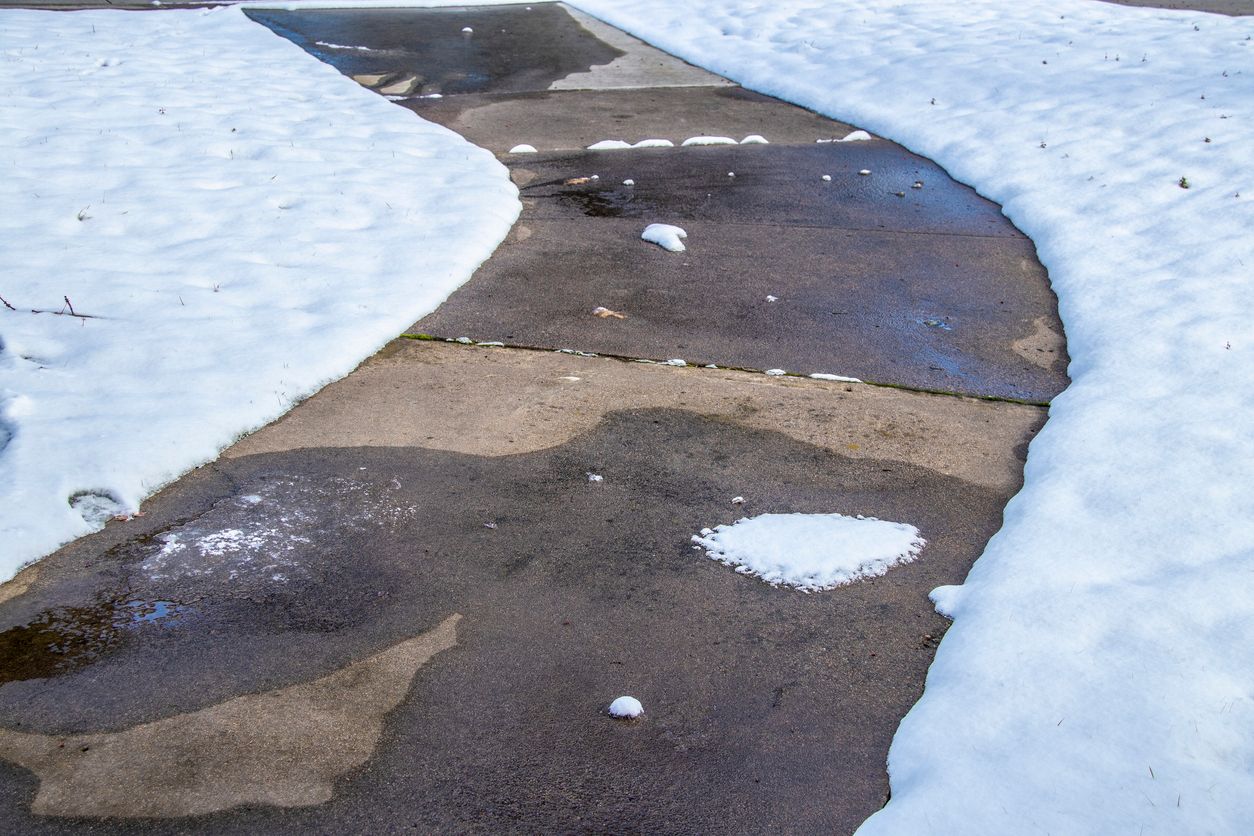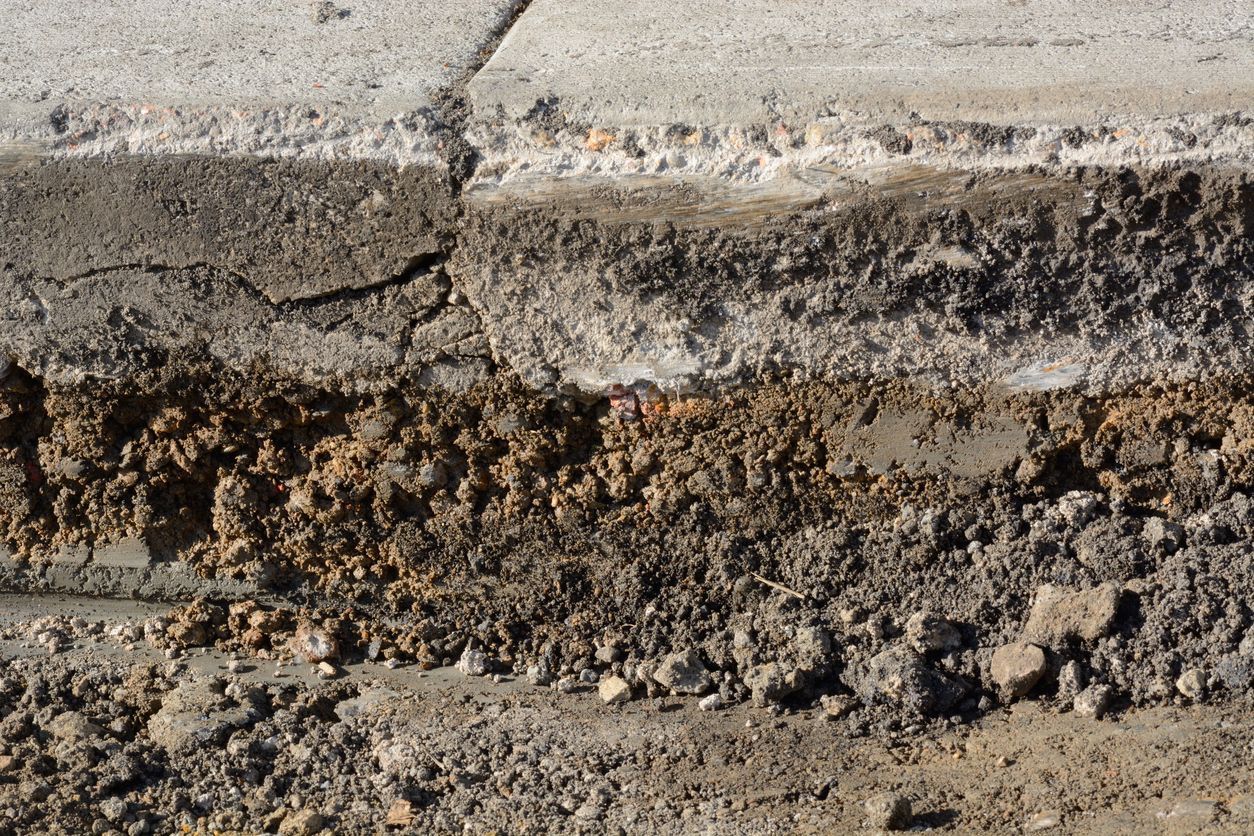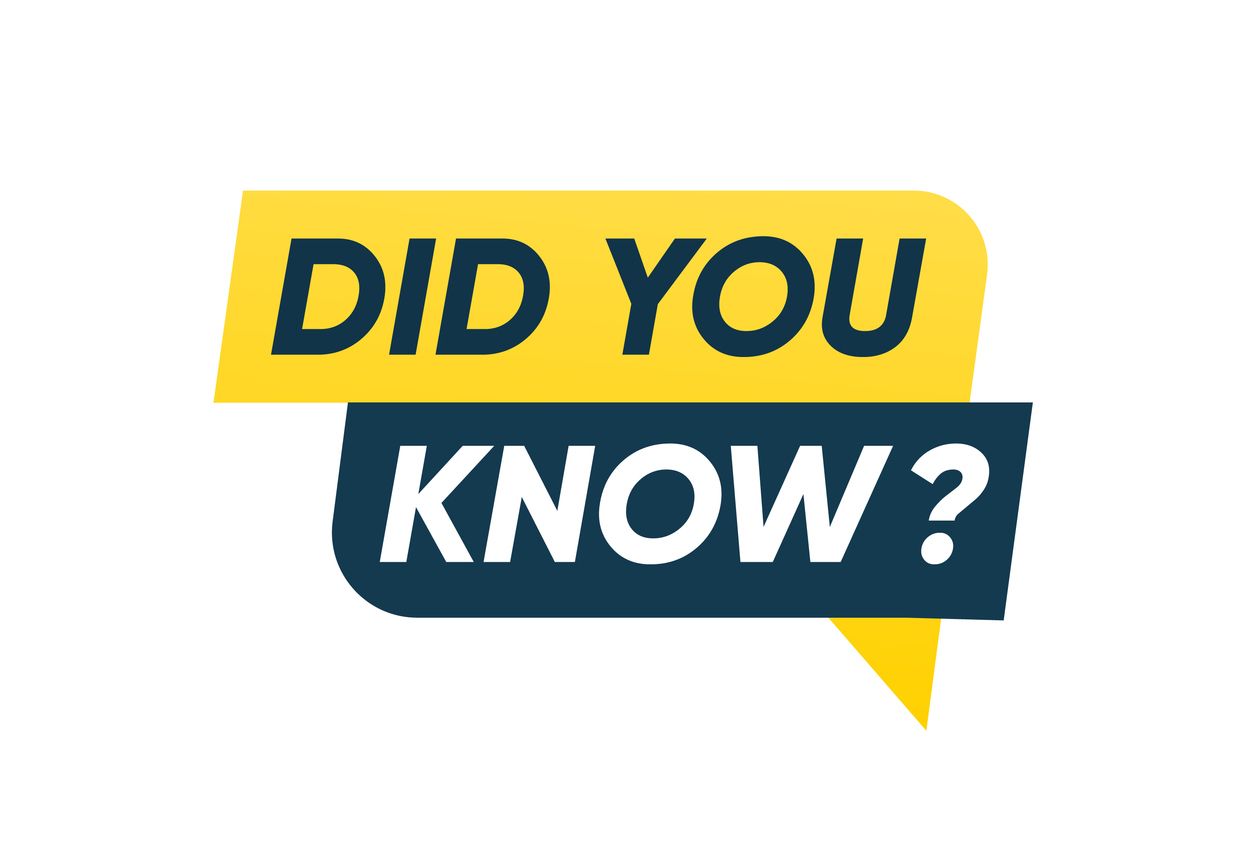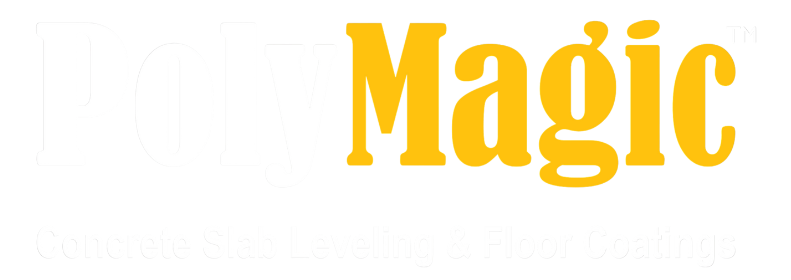When to Use Polyjacking vs. Mudjacking
We all have areas of concrete that become uneven, cracked, crumbling, or even hazardous to walk on. With hundreds of square feet of concrete surrounding most homes in the Kansas City area, it’s common to notice uneven sections. Fortunately, PolyMagic can often repair these issues using our
polyjacking (lifting and leveling technology) before a full concrete replacement becomes necessary.
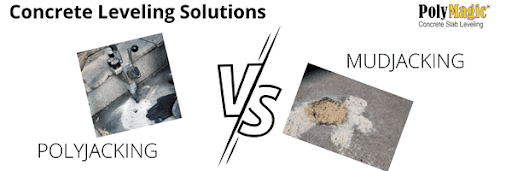
Is Mudjacking or Polyjacking Better?
When you start to notice uneven concrete around your home, it's a good idea to get a free estimate from a reputable concrete lifting company to determine whether the surface can be repaired or needs replacing. Concrete leveling generally comes in two options: mudjacking and polyjacking. So what’s the difference?
As a homeowner, you likely have questions about both methods. Mudjacking is the traditional technique and has been around the longest. PolyMagic, however, uses the more advanced polyjacking process, which involves injecting a high-density polyurethane mixture to lift and level the concrete.
Here are some common questions we receive from Kansas City area homeowners:
- Why does concrete sink, crack, crumble, or settle?
- What concrete areas can be lifted?
- What is the budget for mudjacking? polyjacking?
- Do both have similar warranties?
- How do I find a reputable concrete lifting company?
- Which option is more reliable? permanent?
- Which is less/more invasive?
Why Does Concrete Sink, Crack or Settle?
Several factors impact the soil beneath your concrete and can lead to settlement issues:
1.POOR SOIL CONDITIONS
– Clay-rich soils expand and contract with moisture levels. When oversaturated by rain, melting snow, or leaks, the soil loses strength and allows the concrete to sink—much like standing in wet mud.
2. POOR COMPACTION
– Many homes are built on backfilled soil. If this backfill wasn’t compacted properly during construction, it may compress over time—sometimes slowly over a year—leading to slab settlement.
3. TREE ROOTS
– Trees and large shrubs can consume up to 30 gallons of water a day. When located near concrete, this depletion causes the soil to contract and the concrete to settle.
4. POOR DRAINAGE
– Improper drainage can create pockets of saturated soil, destabilizing the area and leading to sunken slabs. This can be due to area-wide issues or something as simple as a misplaced downspout.
Concrete Lifting Areas
So, what types of concrete areas can benefit from lifting—and when should you choose polyjacking over mudjacking? Both residential and commercial properties all across the Kansas City metro can benefit from concrete lifting. We service Olathe, Leawood, Overland Park, Lenexa, Raymore, Independence, Oak Grove, Blue Springs, Lee’s Summit, Grain Valley, Parkville, Liberty, Belton, Grandview, Columbia and Jefferson City, and Kansas City, Missouri and Kansas City, Kansas.
Geographically we cover the Kansas City area, and can service the following areas around your resident or business:
– Basement Floors
– Concrete Steps
– Driveways
– Foundation Slabs
– Garage Floors
– Patios
– Pool Slabs
– Porches
– Sidewalks
– Slab Homes
What is Mudjacking?
Mudjacking involves pumping a mud-based mixture beneath the sunken concrete (driveways, patios, pool decks, sidewalks, garages, slab homes, etc.). To do this, technicians drill holes directly into the concrete, then use hydraulic pumps to inject the slurry. Once it hardens, it helps stabilize the slab.
However, this is usually a temporary and inexpensive repair. Because the slurry uses the same soil composition that caused the sinking in the first place, the underlying issues often return—making this a less effective long-term solution.
What is Polyjacking?
Polyjacking is a more innovative and reliable process for repairing sunken concrete—especially in commercial applications. The process involves injecting a high-density polyurethane foam beneath the slab, which expands to lift and level the surface.
This method offers minimal downtime and is highly accurate, making it ideal for both residential and commercial jobs. PolyMagic specializes in delivering professional polyjacking results with little disruption.
What is the budget for Mudjacking? Polyjacking?
The cost of concrete lifting depends on square footage and accessibility of the problem area. Generally, mudjacking is more affordable upfront, but polyjacking offers greater precision and long-term results, which can save money over time.
For a better understanding of pricing, we encourage you to browse our
completed projects or
reach out for a custom quote.
Key Differences Between Mudjacking & Polyjacking
Let’s break down the four main differences to help you decide which method is best for your situation:
1.Weight
Polyurethane weighs 250–300 pounds less per yard than traditional mudjacking material. Lighter weight puts less pressure on the soil, reducing the chances of future settling.
2. Reliability
The heavier mud used in mudjacking may contribute to further soil compression over time, leading to additional sinking and requiring another lift.
3. Curing Time
Polyurethane cures in just 15 minutes, allowing you to use the treated surface within minutes—not days.
4. Aesthetics
Polyjacking requires tiny 5/8” drill holes that are barely noticeable when patched. In contrast, mudjacking leaves larger, more visible marks. Simply put: mud is messier.
Contact PolyMagic for a Free Lifting & Leveling Estimate
If you're in the Kansas City area and dealing with uneven concrete, call the experts at PolyMagic. Our team has extensive experience in polyjacking, concrete lifting, and crack sealing.
We’d be happy to schedule your free estimate and help you determine the best solution for your home or business.
